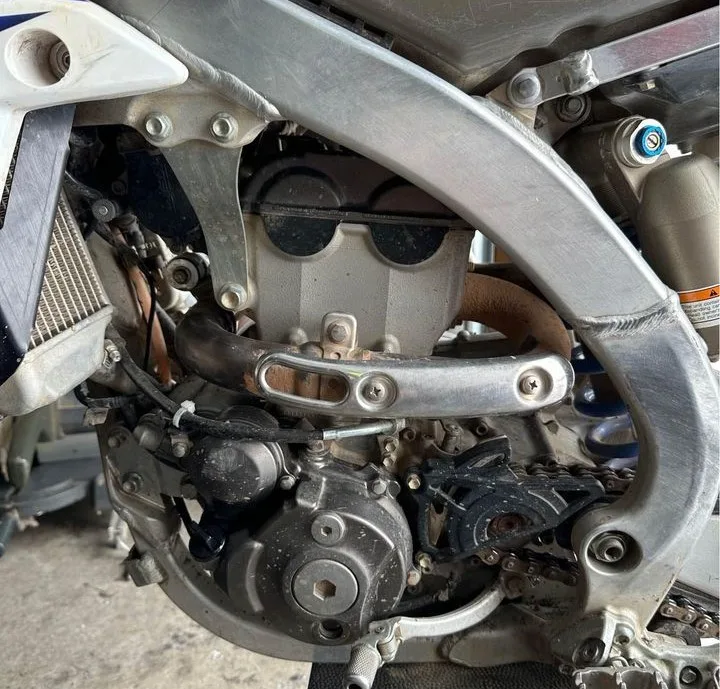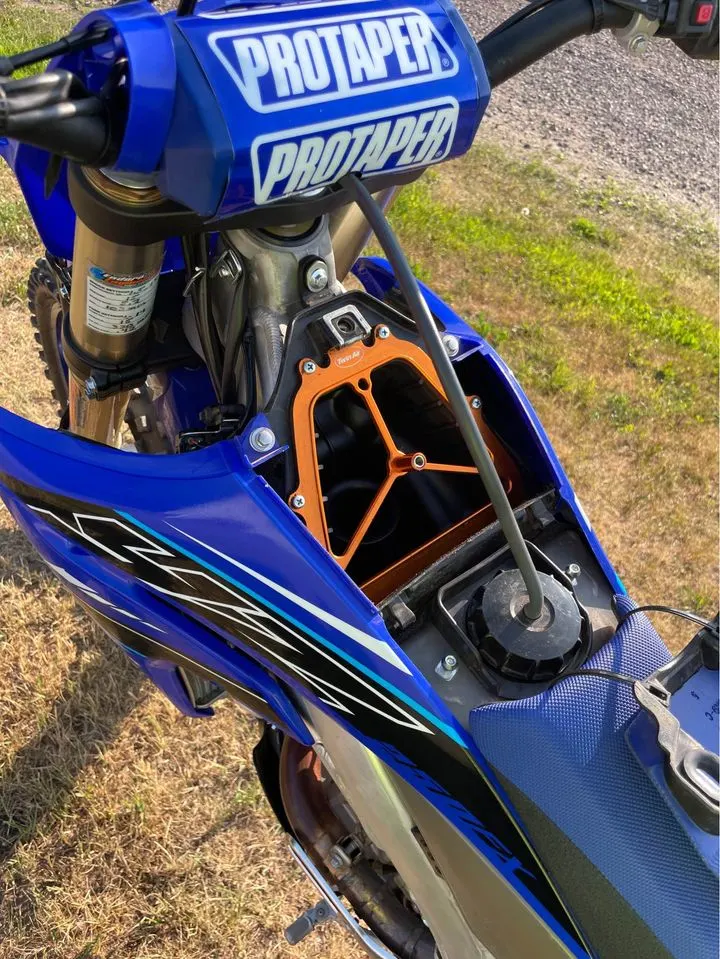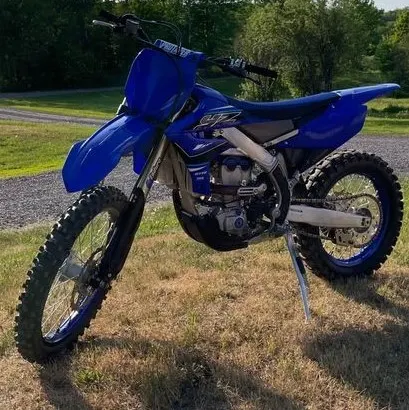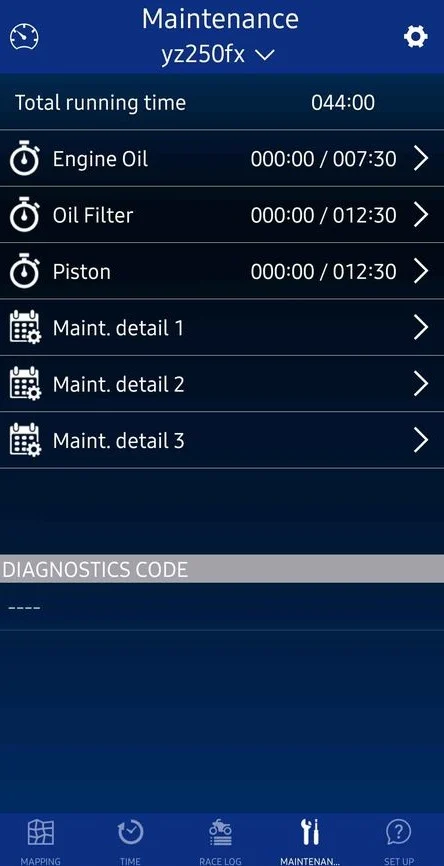Are you interested in getting a Yamaha YZ250FX but aren’t sure if it’s the right bike to buy? Whether you’re a newer rider or looking for a good enduro bike, you’ve found the right article!
In this review, you’ll learn what kind of dirt bike the YZ 250FX is, why it may or may not be the best bike for you, and what to expect when buying and owning one so that you save hours researching and money by choosing the right bike.
What is the Yamaha YZ250FX?
It’s a 250cc 4-stroke cross-country dirt bike, which is another name for an off-road enduro race bike. It’s based on the YZ250F motocross bike, but there are small changes that make it much more enjoyable and easier to ride off-road on trails, in the bush, or in the desert.

Who’s it for?
It’s definitely NOT a good dirt bike for beginners due to its aggressive nature – snappy power and stiff suspension. However, it’s an awesome enduro bike if you’re an experienced trail rider or an off-road racer.
It’s one of the most versatile dirt bikes because it can handle so many types of riding – hare scramble, enduro, hard enduro, as well as some motocross, but does that mean it’s the best dirt bike you can buy??
Keep reading to learn more about the YZ250FX.
Engine – what to expect
Based on the YZ250F MX engine, the YZ 250FX has a high-performance liquid-cooled engine that has lots of power, but there are some minor differences. For example, the 250FX is tuned to have a slightly broader power curve.

This gives you a little bit more low-end and midrange torque for a smooth and more predicate power delivery. This makes it less exhausting to ride in the woods or on trails because it’s not as quite as snappy or jerky with the throttle.
With that said, that doesn’t mean it’s a beginner-friendly engine – it has a lot of power for just 250cc.
Horsepower
Going by rear wheel horsepower, the Yamaha YZ250FX has about 38, which would be in the low 40s if you’re measuring at the crank. That’s a lot of power for an off-road motorcycle, but that number is only important if you’re an expert-level rider.
The real power numbers
You see, 38 HP is only important if you’re constantly riding at peak RPM, which is at about 12,000 RPM. Most of the time you’re going to be riding at a (much) lower RPM, especially if you’re a casual trail rider.
This means you need to consider the torque and horsepower from 3000 RPM and higher. Hint – the YZ250FX (and most enduro bikes) doesn’t make much power at 3k RPM.

If you want to ride at low RPM, you’ll want an air-cooled trail bike or a bigger enduro bike, such as a 300cc 2-stroke or 450 4-stroke.
5-speed vs 6-speed
Compared to the 250F MX model, the YZ250FX has a wider-ratio 6-speed transmission, which gives you a lower first gear and a taller 6th, but what does that mean for you?
You don’t have to compromise on gearing if you’re riding off-road. For example, first gear is low enough for most technical riding, but 6th gear is also tall enough to cruise at a relatively high speed without revving the engine out at a super high RPM (wears the engine out quicker).
Top speed
The top speed of a stock YZ 250FX is about 85 mph, which is noticeably higher than the YZ250F motocross bike – thanks to its much taller 6th gear. This allows you to cruise at a higher speed or lower RPM if you’re taking a gravel road in the mountains, or you can go faster if you’re racing in the desert, such as a hare and hound race.

EFI – it’s not as complicated as you think
Carburetors can work well, but they can be complicated, messy, and frustrating when diagnosing a no-start or poor running issue. If you’re worried about fuel injection being complex vs a carb, don’t worry – reliability is high and tuning is surprisingly easy (especially on the newer models).
As long as you’re using fresh gas, not letting your bike sit too long (a few months), and not letting the tank run dry while riding, you should have very few EFI problems. With Yamaha’s new EFI power tuner app (that’s FREE), you can tune your 2020 and newer YZ250FX.
Suspension
Using the same Kayaba SSS forks and shock as the 250F MX model, it’s very similar. The big difference is that the YZ250FX uses slightly softer springs as well as internal valving.
This makes it more comfortable and less exhausting while riding off-road because it soaks up the small bumps and rocks much better than the motocross suspension setup.
Front forks
The stock 250FX forks are fully adjustable, but the most important thing is the spring rate. Stock fork springs are good if you’re in the 150-180 pound range, but can work if you’re slightly lighter or heavier, depending on your riding style.
If you’re over 200 lbs and an aggressive rider, you’ll find the stock suspension soft and will want stiffer spring rates at the minimum or else you’ll be bouncing around and more likely to bottom out (fully compress) the forks or shock.
Easy clicker adjustment for more confidence
After that, you can start adjusting the clickers, which are actually very simple to tune. You simply turn them in to slow down the compression or rebound and turn it out if you want to speed up the damping.
By simple trial and error, you can make your YZ250FX more comfortable because the tires will stay on the ground for better traction – ultimately giving you more control and confidence as a rider.
Rear shock
If the spring rate is set for your weight & riding style, then you can get the sag/ride height properly set. Having the ride height too low or high will reduce the stability and/or traction, making it harder to handle because the front and rear suspension aren’t working together for the most traction (For example, the front end washes out easily with too much rear shock sag).
You also get full damping adjustability, including a high-speed damping adjustment. This is nice for controlling the small bumps and rocks for better “plushness” without blowing all the way through the stroke.
Handling
With similar dimensions to the YZ250F, the YZ250FX handles well and is similar to a motocross bike with an exception.
Since the suspension is softer, it’s easier to handle the 250FX at lower speeds and tighter turns because the suspension will be more “compliant” – it handles better compared to motocross suspension which doesn’t compress much at slow speeds.
Seat height – what size rider is the YZ250FX for?
Like most enduro bikes, the Yamaha YZ250FX will feel tall if you’re short like me (5’6”). This is because it has over 12” of suspension travel and high ground clearance.
With a 37.6” seat height, the YZ 250FX is a good size if you’re 5’9”-6’1”, but it also depends on your inseam and experience level.
For example, if you’re a newer dirt bike rider, then being able to touch the ground with a foot when you come to a stop will give you more confidence, but as you build your balance skills off-road, the seat height won’t matter as much because you don’t need to touch the ground often.
Weight – how does it compare?
The YZ250FX weighs 245 pounds (wet/curb weight) when it’s ready to ride. It’s about 11 lbs heavier than the YZ250F due to the larger tank and other off-road accessories – it’s average weight compared to other 250cc four-stroke enduro bikes.
Compared to a 450, the Yamaha 250FX will feel much lighter even though it’s only about 9 lbs lighter than the YZ450FX – why is that?
The rotating mass of the engine gives it more inertia, making it feel noticeably heavier. This is one of the reasons why a dirt bike with a bigger engine is more likely to wear you out quicker – not to mention the arm-ripping power that can ride you right into a tree when you’re exhausted and give it too much gas!
18” vs 19” rear wheel – what’s the difference?
Another change from the YZ250F is that the YZ250FX has a smaller 18-inch rear wheel compared to the 19-inch on the MX model. The 18” rear tire has a larger sidewall, which makes it slightly softer for better plushness and traction, which is a nice benefit for off-road riding.
Model year history & changes
Since the YZ250FX is such a popular competition enduro dirt bike for Yamaha, they have continually updated it every 2-3 years with mostly minor changes that add up to a better performing and more reliable bike.
These are the most notable updates over the years for the Yamaha 250 cross-country enduro bike:
- 2015: First year of the YZ250FX
- 2017: Cylinder and intake updates for improved mid-to-top-end power, lower footpegs for better handling,
- 2020: New engine that now works with Yamaha’s free Power Tuner App, new frame, slimmer bodywork
- 2022: Updated engine/intake for better and more power
Reliability – how long will it last?
How are you going to ride it? It’s not going to be reliable if you’re constantly bouncing off the rev limiter, but what if you actually take care of it?
The YZ250FX is about as reliable as it gets for an enduro race bike. You could easily get 100+ hours on the engine if you’re a casual trail rider, but it mainly depends on YOU.

For example, if you’re not changing the oil and air filter when necessary, the valves, timing chain, and piston are going to wear out much faster due to excessive heat and dirt entering the engine.
Any common issues?
You might read about an unusual problem that somebody has had with their YZ250FX, but for the most part, there aren’t any major common problems with this dirt bike besides the typical things.
For example, it can be hard to start if the battery is too weak or the gas is old. This article says that these are the best tips for starting a YZ250FX or 250F (2014+):
- Run Antigravity Batteries’ AG-801 (Amazon) – more cranking amps than stock
- Set the idle to about 1,900–2,000 rpm while the bike is in gear – the ECU changes idle RPM when you put it into any gear
- Hot starts – Slightly turn the throttle (2-3mm open)
- If it flames out and won’t start – press the kill switch for 5 seconds – it supposedly resets the computer
- Adjust the clutch lever so that it’s not engaging when you have it pulled in (starting in gear)
YZ250FX flameouts/low RPM jerky throttle
Some people mention that their bike stalls easily (flame out) or the throttle is jerky/snappy at low RPM. It’s often a simple fueling issue causing this.
To fix it, a fuel controller/tuner or the Yamaha power tuner app can add more fuel to smooth out the power and throttle response. Flame outs and the jerky throttle is often caused by a lean fuel mixture.
YZ250FX Specs & Dimensions
These are the specifications from Yamaha’s website:
| YZ250FX | |
| Manufacturer | Yamaha |
| Years Made | 2015-current |
| Engine | 250cc liquid-cooled 4-stroke |
| Transmission | 6-speed wide-ratio manual clutch |
| Seat Height | 37.8” (96cm) |
| Suspension Travel (Front/Rear) | 12.2”/12.5” |
| Weight (Curb/Wet) | 245 lbs |
| Horsepower | 38 HP |
| Top Speed | 85 MPH |
| Fuel Capacity | 2.16 Gallons |
| Price (New MSRP) | $8,899 |
Is the YZ250FX the right dirt bike for you?
Still trying to decide if the Yamaha YZ 250FX is a good choice for you?
Pros
- Fast & easy to ride for an enduro bike
- Good low-end and midrange torque for a 250 four-stroke
- Electric start
- Fuel-injected – no dealing with jetting (Yamaha has a free tuner app!)
- Less exhausting than a 450
- No mixing gas
- Reliable for a race bike
- Great suspension and handling for aggressive off-road riding
- Can handle some mild track/MX riding
- Wide-ratio transmission is nice for trail riding at low and high speeds
- Holds its value when
Cons
- It’s very fast for a beginner – snappy power is harder to control
- Suspension is stiff if you’re a beginner or novice trail rider
- No backup kick starter
- Expensive compared to a trail bike
- Engine rebuilds can be very costly (more moving parts)
- EFI requires a computer-controlled device to tune (new models can use free Yamaha tuner app)
How much does the Yamaha YZ250FX cost?
The MSRP of a new YZ250FX is $8,899, however, that doesn’t include the dealer fees and taxes. Out-the-door price will likely be over $10k, but you can find a used one a few thousand cheaper.
You can find a used YZ 250FX in the $4000-8000 price range, depending on the year and condition. However, your local market supply & demand will also play a role in the value of it.
YZ250FX vs YZ250F
These are the practical differences between the Yamaha 250F and 250FX (MX vs enduro bike):
- Engine – 250FX has smoother and more predictable power
- Suspension – 250FX is noticeably softer for off-road riding
- Rear wheel – Off-road 18” tire on 250FX
- Kickstand – 250FX has one, 250F does not
- Fuel tank – Larger capacity on YZ250FX
- Muffler – slightly quieter on 250FX
- Chain – O-ring chain on 250FX
- Skid plate – Off-road model option for protection
- Low-fuel warning light – Off-road model accessory
YZ250FX vs WR250F
Although the WR250F is similar to the YZ250F MX bike, it’s not as closely related as the YZ250FX. For example, the biggest difference is that the 250FX has a snappier power curve and stiffer suspension than the WR250F model.
This makes the YZ250FX a better choice if you’re an experienced or more aggressive rider that can take advantage of the extra power and stiffer suspension. The WR250F is a little better for more casual trail riding and also comes with a headlight and tail light.
Learn how to trail ride with confidence
I want to help you become a safer and more confident trail rider if you’re new, just getting back into riding, or struggling to build your confidence. Most people try to figure it out on their own, but this causes you to form bad habits that cause you to have less control and whiskey throttle into a tree or fall over every 5 minutes. Grab my FREE guide to build your confidence quickly here.


